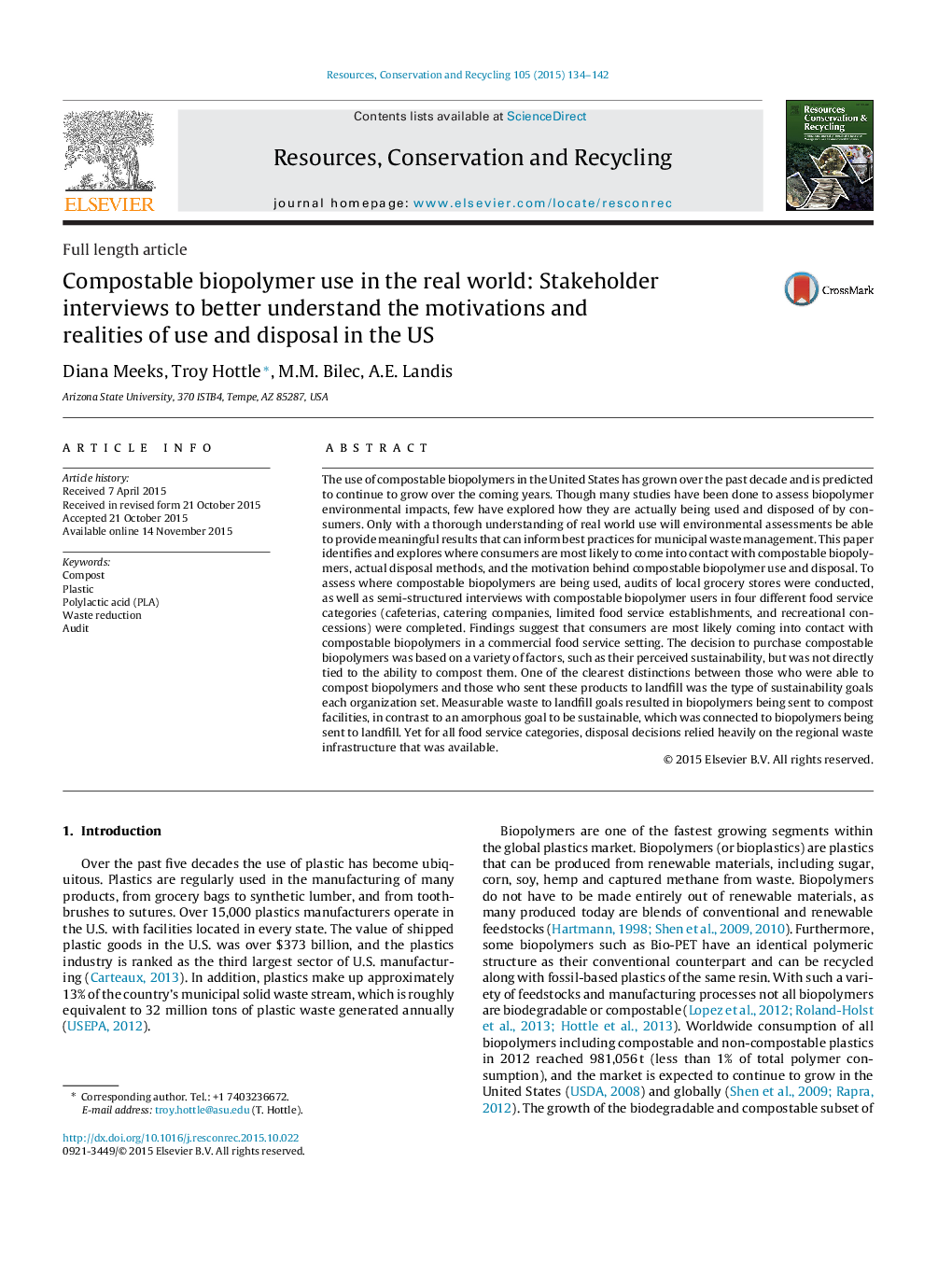| کد مقاله | کد نشریه | سال انتشار | مقاله انگلیسی | نسخه تمام متن |
|---|---|---|---|---|
| 10508057 | 948180 | 2015 | 9 صفحه PDF | دانلود رایگان |
عنوان انگلیسی مقاله ISI
Compostable biopolymer use in the real world: Stakeholder interviews to better understand the motivations and realities of use and disposal in the US
ترجمه فارسی عنوان
بیو پلیمر کامپوزیتی در دنیای واقعی استفاده می شود: مصاحبه های ذینفع برای درک بهتر انگیزه ها و واقعیت های استفاده و دفع در ایالات متحده
دانلود مقاله + سفارش ترجمه
دانلود مقاله ISI انگلیسی
رایگان برای ایرانیان
کلمات کلیدی
موضوعات مرتبط
مهندسی و علوم پایه
مهندسی انرژی
انرژی های تجدید پذیر، توسعه پایدار و محیط زیست
چکیده انگلیسی
The use of compostable biopolymers in the United States has grown over the past decade and is predicted to continue to grow over the coming years. Though many studies have been done to assess biopolymer environmental impacts, few have explored how they are actually being used and disposed of by consumers. Only with a thorough understanding of real world use will environmental assessments be able to provide meaningful results that can inform best practices for municipal waste management. This paper identifies and explores where consumers are most likely to come into contact with compostable biopolymers, actual disposal methods, and the motivation behind compostable biopolymer use and disposal. To assess where compostable biopolymers are being used, audits of local grocery stores were conducted, as well as semi-structured interviews with compostable biopolymer users in four different food service categories (cafeterias, catering companies, limited food service establishments, and recreational concessions) were completed. Findings suggest that consumers are most likely coming into contact with compostable biopolymers in a commercial food service setting. The decision to purchase compostable biopolymers was based on a variety of factors, such as their perceived sustainability, but was not directly tied to the ability to compost them. One of the clearest distinctions between those who were able to compost biopolymers and those who sent these products to landfill was the type of sustainability goals each organization set. Measurable waste to landfill goals resulted in biopolymers being sent to compost facilities, in contrast to an amorphous goal to be sustainable, which was connected to biopolymers being sent to landfill. Yet for all food service categories, disposal decisions relied heavily on the regional waste infrastructure that was available.
ناشر
Database: Elsevier - ScienceDirect (ساینس دایرکت)
Journal: Resources, Conservation and Recycling - Volume 105, Part A, December 2015, Pages 134-142
Journal: Resources, Conservation and Recycling - Volume 105, Part A, December 2015, Pages 134-142
نویسندگان
Diana Meeks, Troy Hottle, M.M. Bilec, A.E. Landis,
